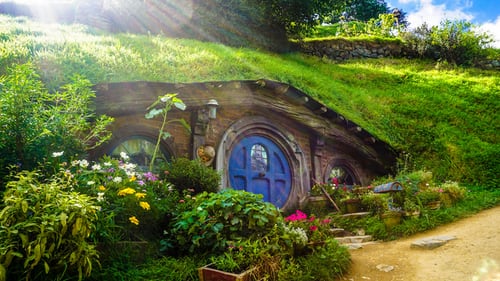Landscape design is the process of creating liveable outdoor spaces in the exterior of a house or building using design elements as well as functional components. It is generally meant to complement the indoor spaces and usually serves as an additional recreational or lounging area for the occupants of a building. Since the space is constructed outdoors, exposure to the elements is generally considered and expected, which results in the design making use of natural elements such as trees and plants as well as natural lighting and ventilation. This also requires that the elements used in the exterior design are able to withstand the impact of temperature variations due to weather, rain, and the presence of various insects and animals. Landscape design is often combined with horticulture and gardening as it provides natural decorative elements as well as shade and maintain temperature in the space. Lighting is also an important aspect of landscape design which can add to the ambience of the space, although it would rely mainly on natural light during the daytime, artificial lighting in coloured lamps or decorative torches do much to create a comfortable atmosphere outdoors. This article will describe the various elements, factors to consider and general procedure for designing an outdoor space.

Function
It is important that the function of the outdoor area is decided before arranging and manipulating the environment to better suit that purpose. The function of the space will determine vital components of the design such as space required, which furniture (if any) to be used, the type of lighting required, and other similar consideration. The most common use of an outdoor area is as a lounging area, as an extension of the indoor living room. This requires the outdoor space to be outfitted with similar furniture in functionality, but the materials and design should incorporate the fact that the furniture is to be used outdoors. Suppliers such as outdoor furniture Sunshine Coast sell furniture specially made for outdoor use and are expected to withstand the increased exposure to the elements as befits an outdoor space.
Aesthetics
Aside from functionality, aesthetics is another important factor. The primary goal with creating an outdoor space is often the decorative and aesthetic qualities and the environmental ambience. This can be achieved by utilising various design principles such as balance, spacing, proportion and diversity. Spacing can mean the effective utilisation of space and avoiding clutter. This is generally easier than in interior spaces as the available space is much larger. Diversity can be achieved by including different types of decorative and functional elements in the space and can be easily enhanced by using natural elements in the décor such as plants and trees, and artificial elements such as ponds and pools. They will also regulate temperature in the outdoor environment.

Hence the design of an outdoor environment first involves determining the purpose of the space and then the arrangements of the various elements to be included in it, and finally decorative elements and lighting to finish the landscape.
